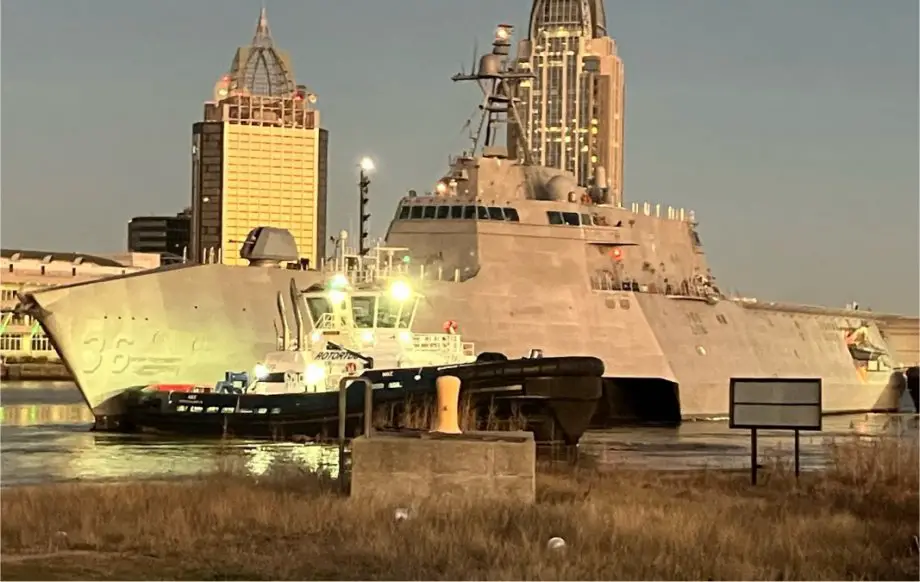Breaking news
US Navy Independence class LCS USS Kingsville completes acceptance trials.
According to a PR published by Austal USA on February 8, 2024, the future USS Kingsville (LCS 36) successfully completed its acceptance trials in the Gulf of Mexico, marking a significant step towards its integration into the U.S. Navy's Pacific fleet.
Follow Navy Recognition on Google News at this link
 Independence class littoral combat ship USS Kingsville. (Picture source: Austal)
Independence class littoral combat ship USS Kingsville. (Picture source: Austal)
This event signals a productive beginning to the year for its builder, with the team behind the ship receiving accolades for their efforts in preparing it for imminent delivery. The USS Kingsville is the 18th ship of the Independence-variant Littoral Combat Ships, with the construction of the final ship in this class, the future USS Pierre (LCS 38), nearing completion and expected to be christened in the coming spring.
Besides working on the Littoral Combat Ships, the shipbuilder is also engaged in constructing a variety of other naval vessels, including two Expeditionary Fast Transport ships, two Navajo-class Towing, Salvage, and Rescue Ships, an Auxiliary Floating Dry Dock Medium craft, and an unmanned surface vessel.
Additionally, projects extend to creating modules for submarine programs and aircraft elevators for aircraft carriers, with plans to start building Offshore Patrol Cutters for the U.S. Coast Guard later in the year.
Independence class
The Independence-class littoral combat ships (LCS) are a series of vessels developed for the United States Navy, intended for operations in the littoral or nearshore regions. Originating from Austal's high-speed ferry design, this class evolved into a naval project through collaboration with General Dynamics. The aim was to create fast, agile ships capable of multiple roles in coastal areas, leading to their trimaran design which offers enhanced stability and speed.
Initially, the Navy planned to select either the Independence class or the competing Freedom class for its littoral combat ship needs. However, decisions later expanded the program to include ships from both classes, reflecting a broader approach to acquiring littoral capabilities.
The program has faced its share of hurdles, including significant budget overruns and operational adjustments. Early ships like the Independence and Coronado were initially earmarked for testing rather than immediate fleet deployment, indicating a shift in strategy for their use. These challenges led to modifications in subsequent vessels to address issues of cost, performance, and operational readiness.
Independence-class ships are characterized by their size, with a length of 127.4 meters, a beam of 31.6 meters, and a draft of 13 feet. Their design enables speeds of up to 50 knots and a range of 10,000 nautical miles. The trimaran hull not only contributes to these performance metrics but also aids in the vessel's agility and stability in various sea conditions.






















